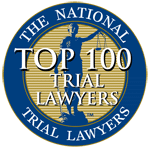Clicking, Stiffness, Grinding & More.
Postarthroscopic Glenohumeral Chondrolysis (PAGCL)
Arthroscopic shoulder surgery can give patients relief from painful and debilitating injuries. But studies have shown that medicine delivered to the surgical site through the use of pain pumps can cause serious, permanent harm to the patient’s shoulder cartilage – a condition called Postarthroscopic Glenohumeral Chondrolysis (“PAGCL”). At Miller & Steiert, we help clients receive financial compensation when they suffer shoulder damage from life-changing Postarthroscopic Glenohumeral Chondrolysis.
Arthroscopic surgical procedures have revolutionized surgery, including shoulder surgery, allowing doctors to make small incisions and operate using tiny cameras and instruments. Doctors use arthroscopic procedures to make diagnoses and repairs, minimizing trauma to the body and decreasing the recovery time associated with traditional surgery through large incisions.
Nonetheless, patients may suffer significant pain after these procedures. During arthroscopic shoulder surgery, doctors may implant a small, flexible tube (a “catheter”) into the shoulder. The catheter can be connected to a disposable pain pump which administers intra-articular pain medicine directly to the joint. The most common drug administered with this method is bupivacaine (or “Marcaine®”) with epinephrine. The pain pump typically is used for several days, after which the catheter is removed.
Unfortunately, researchers have found a connection between this use of pain pumps and permanent shoulder damage due to PAGCL.
Symptoms Associated with PAGCL
The glenohumeral joint consists of the ball at the end of the arm bone and the socket of the shoulder blade. The arm bone’s head is covered in articular cartilage, which allows the shoulder joint to move smoothly. Chondrolysis is the breakdown of that cartilage. When the cartilage breaks down, the two bones making up the joint begin rubbing together, leading to pain, inflammation, stiffness and a loss of the shoulder’s range of motion. Over time, the bones will begin to deteriorate and the entire shoulder joint may need to be replaced with a prosthetic shoulder. Initial symptoms of PAGCL following arthroscopic shoulder surgery may include:
- Shoulder stiffness or weakness
- Decreased range of motion
- Clicking, grinding or popping
- Pain when the shoulder is at rest
- Pain when the shoulder is in motion
Experienced Colorado Shoulder Injury Attorneys Can Help
We have experience and resources to help patients suffering from shoulder injury from the use of pain pumps during shoulder surgery. In fact, we are one of only a few firms in Colorado with experience litigating such claims. To schedule a free appointment and evaluation, contact Miller & Steiert today.











